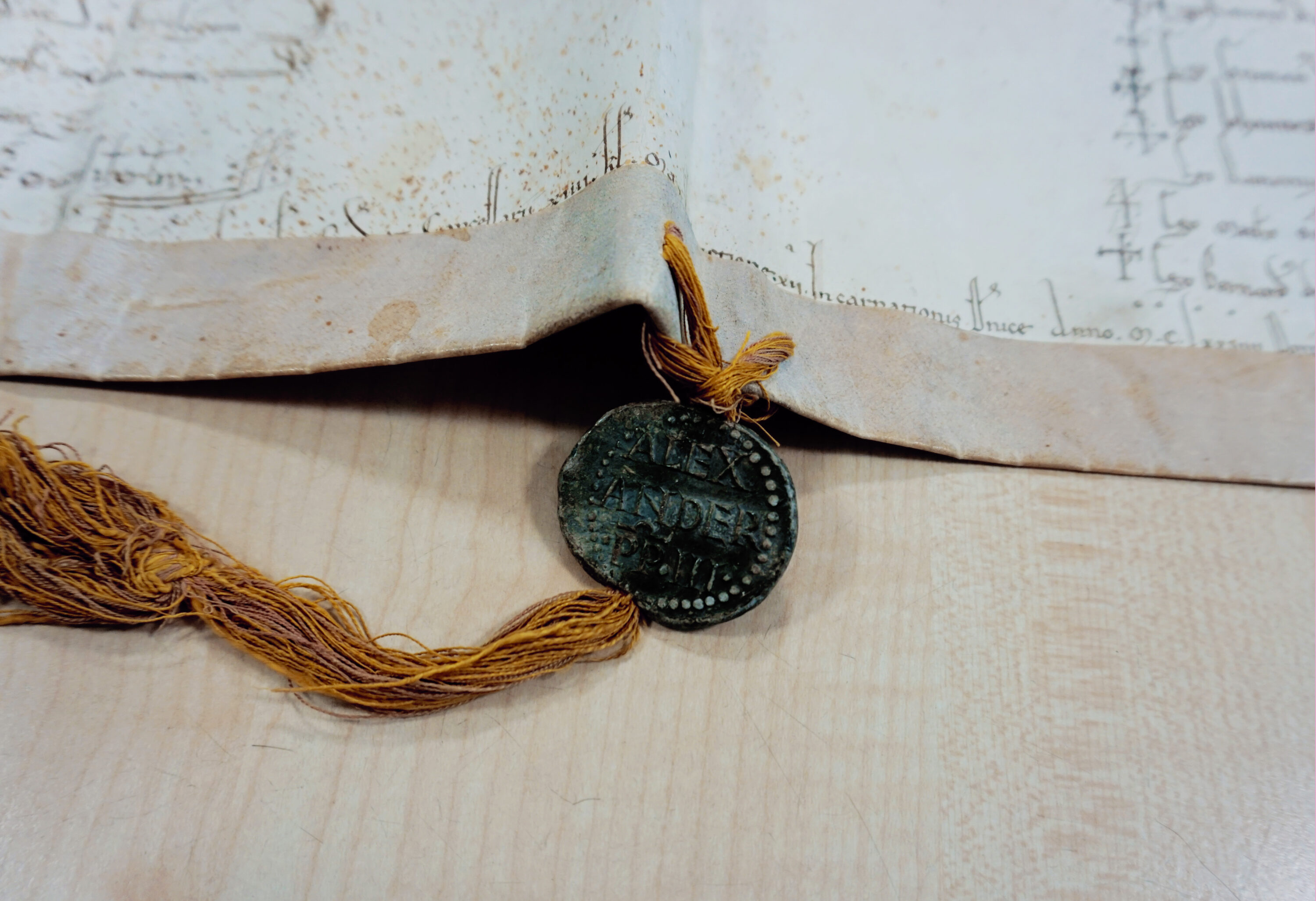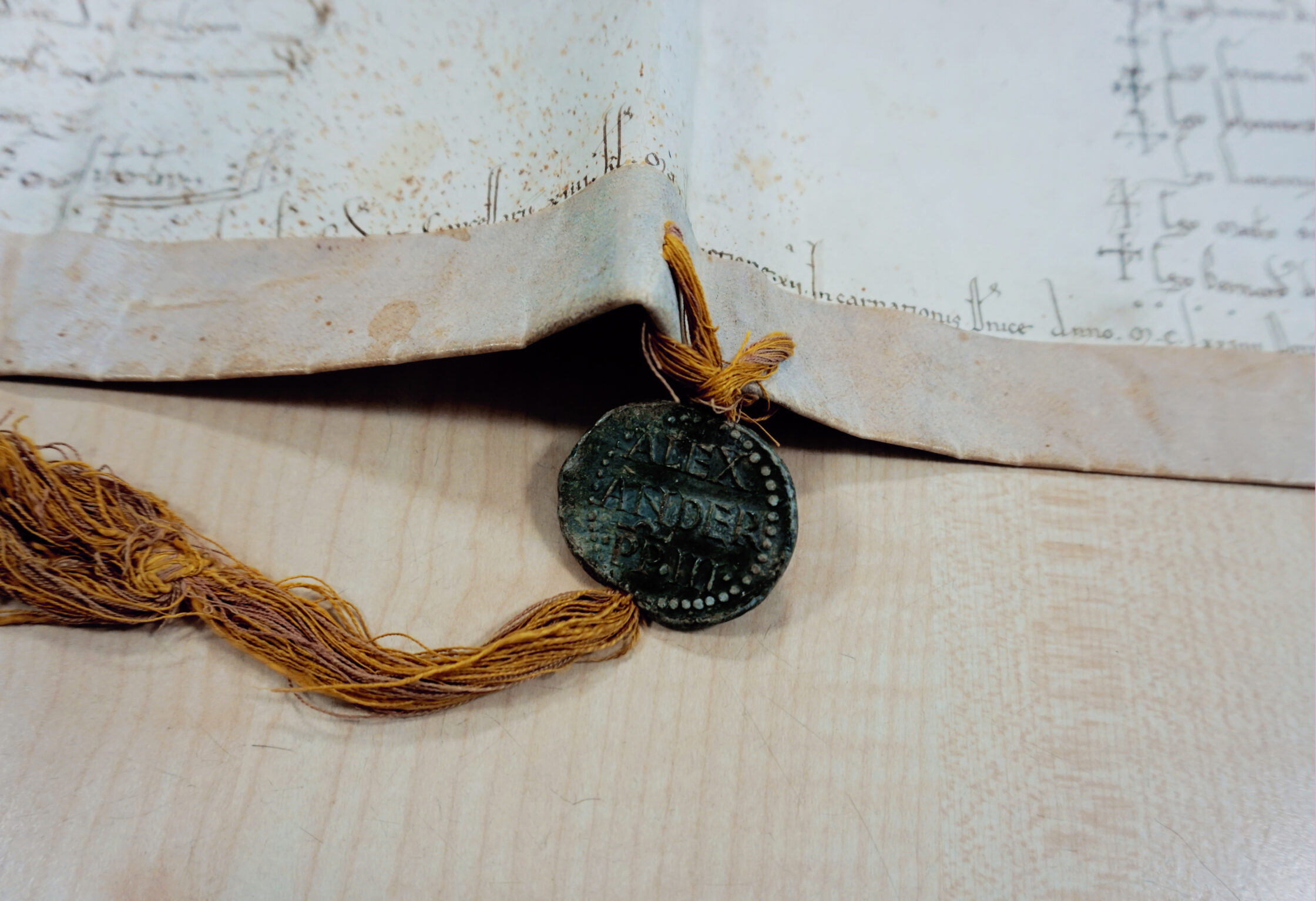
Link
https://formierung-europas.uni-koeln.de
Runtime
2023–2040
project participants
Institute of History at RWTH Aachen University, Institute of History at JMU Würzburg, CCeH. Project leads: Prof. Dr. Harald Müller (Aachen) and Prof. Dr. Martina Giese (Würzburg). CCeH employee: Hannah Busch.
Funding
Joint project of the Bavarian Academy of Sciences and Humanities and the North Rhine-Westphalian Academy of Sciences, Humanities and the Arts, funded by the Academies’ Program.
Description
The project focuses on the Alexandrine Schism (1159–1177) as the most significant pan-European test case of how processes and dynamics of dissociation worked and could be overcome in the Middle Ages. The aim of the project is to systematically record and analyze the schism on the basis of the first digital processing of the approximately 11,000 witnesses to the reign of Pope Alexander III (1159–1181). This lack of access to the entire tradition in contemporary forms is a prerequisite for approaching the content, which must in particular develop a differentiated overall assessment of structures, intentions, forms of communication and interaction as well as strategies of assertion. In summary, it can be explained how the seemingly insurmountable dissociation led to the reconstitution of Latin Europe under the guidance of the Roman bishop, who was henceforth accepted as the guarantor of order, and why comparable ruptures did not occur again for centuries.
The European dimension of the project will be represented by a digital work and communication platform, which will collaboratively bundle national and international medieval papacy research and pave new ways for the evaluation of material. It also contains an area for the multi-form presentation of results, in which the texts, selected key documents and their illustrations are made available to the scientific community and the interested public.
Picture credits
Alexander III takes the collegiate monastery of Saint-Dié (diocese of Toul) under papal protection, confirms its ownership and grants it the free choice of provost. Rome, Lateran, February 16, 1179 (JL 13290).
Épinal, Archives départementales des Vosges, G 241, n° 43 (Photography: Hannes Engl).
